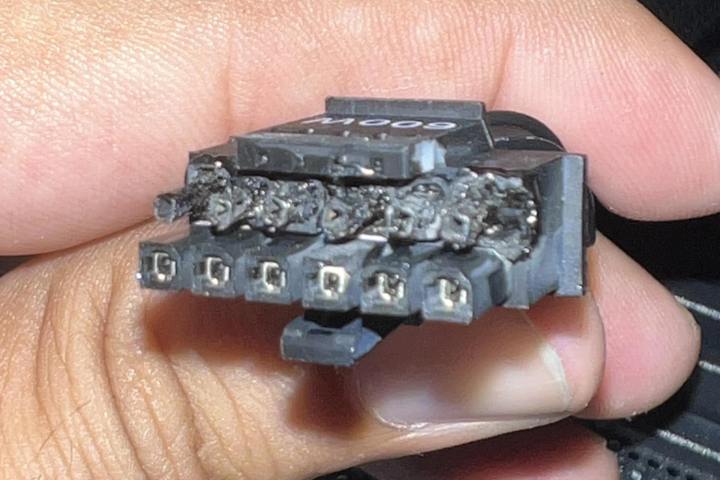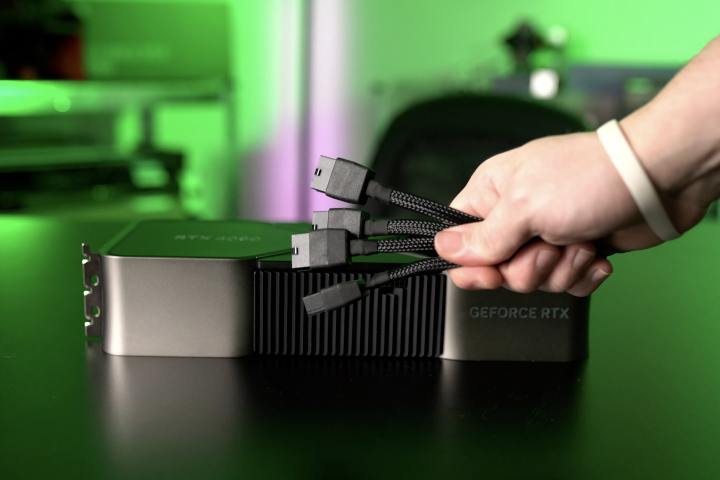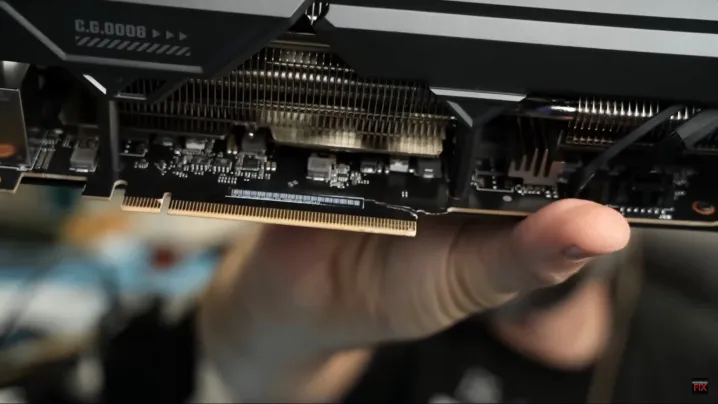
For all the controversies around GPU prices, insane power requirements, and massive coolers, Nvidia’s RTX 4090 remains one of the best graphics cards you can buy. It’s uncompromising in its power, and it’s the perfect halo product to sit on top of the current-gen GPUs. I don’t think Nvidia should take another swing at this class of GPU, though.
For as powerful as the RTX 4090 is, it’s only become more obvious that it’s a problematic GPU. Trying to deliver such a high-end GPU in a consumer PC has some unforeseen consequences, all of which we’ve seen come to light over the past year. It’s hard to imagine that Nvidia will skip making an RTX 5090, but I hope it shows some restraint in the next generation.
Melting connectors
The RTX 4090 isn’t really built for gaming. It’s a monster gaming GPU — just read our RTX 4090 review — but I’m talking about its construction. This is a 450-watt graphics card that has up to 600W of power on tap, and a size that commonly occupies three slots and sometimes even more. It’s big, it’s heavy, and it’s crazy powerful.

It’s surprisingly power efficient given the performance Nvidia is able to accomplish, but again, it’s the physical construction that’s a problem. Most obviously, the power connector. We’ve heard about melting RTX 4090 connectors ad nauseum, with the 12VHPWR cable the card requires barely holding up to the 600 watts of power capable of traveling across it.
We now know that the melting issue comes down to users not fully seating the plug, but as GamersNexus points out, it’s a very easy mistake to make. The damage had already been done, too. Investigations into the issue claimed some connectors were better than others, and third parties jumped on releasing their own “safer” alternatives. Then these connectors started to melt, voiding the card’s warranty in the process.
We’ve been seeing melting RTX 4090 connectors for over a year now, and although there are many more safe RTX 4090s than melted ones, it’s not really a risk you want to take on a $1,600 GPU. This really comes down to power demands, too. Last generation’s RTX 3090 was rated at 350W and required a 12-pin connector that split into two 8-pin connectors. The RTX 4090 is rated at 450W with an updated 12-pin connector that splits into four 8-pin connectors.

The GPU itself is very power efficient, much more so than the RTX 3090, but that doesn’t get around the melting issue. It’s repeatable even at factory settings, and the connector wasn’t robust enough to handle that much power if it was even slightly removed from its plug. Thankfully, the updated 12V-2×6 connector is easier to deal with, but the original RTX 4090 flew too close to the sun.
Cracking PCBs
A big problem with the original connector wasn’t just lazy builders. It’s the massive size of the RTX 4090. Even in a spacious PC case like the Lian Li PC-O11D, you’d have to press the connector up against the side panel in a horizontal orientation. That’s just for Nvidia’s design. Third-party models are even more cumbersome.
We’re learning that size has more implications outside of smashing the connector. We recently saw a report from NorthridgeFix, a YouTube channel and repair shop in California, that showed 19 RTX 4090 cards with a cracked printed circuit board (PCB). The YouTuber and repair technician says this is due to the weight of the card, which causes it to sag without a support.

GPU supports aren’t a new concept, but you haven’t needed to worry about them too much in the past. For cards heavy enough to require a support, the manufacturer generally included one with the card. The many variations of the RTX 4090 challenge those supports, however, with some clocking in at close to 8 pounds.
Just like the melting connector problem, this comes down to user error. However, it’s hard to put the blame on the user fully when such a monstrous card is so impractical in so many PCs. If cracked PCBs and melting connectors are common enough, maybe the card was too much for the consumer market.
A different class of GPU
The big problem with the RTX 4090, however, is the space is occupies in Nvidia’s lineup. We’ve seen this class of graphics card before with Nvidia’s Titan series of GPUs, but there’s always been a clear separation between the desktop lineup for gaming, and the cards that could straddle the line between gaming and professional work. The RTX 4090 blurs that line.
The lineup would previously stop at the RTX XX80 class of GPU, with either a Titan or RTX XX90 class occupying the high-end. This generation, Nvidia has the rather disappointing RTX 4080 at $1,200 and the exceptional RTX 4090 at $1,600. It’s an option for high-end gamers that are considering a GPU that costs over $1,000.

We don’t know how many RTX 4090s customers bought compared to other cards, but it certainly marks a shift in Nvidia’s positioning. Instead of an optional extra on top of the flagship model, the RTX 4090 is the head honcho. It’s the card that gamers salivate over. It’s the gold standard. That’s unfortunately only amplified the issues with the card.
I’m convinced Nvidia will release an RTX 5090 whenever we see next-gen GPUs, but I hope it isn’t as problematic as the RTX 4090 is. Don’t get me wrong, the RTX 4090 is a great card. But trying to achieve such high performance in a PC built for gaming has shown some side effects, and it would be a shame to see those mistakes repeated.




